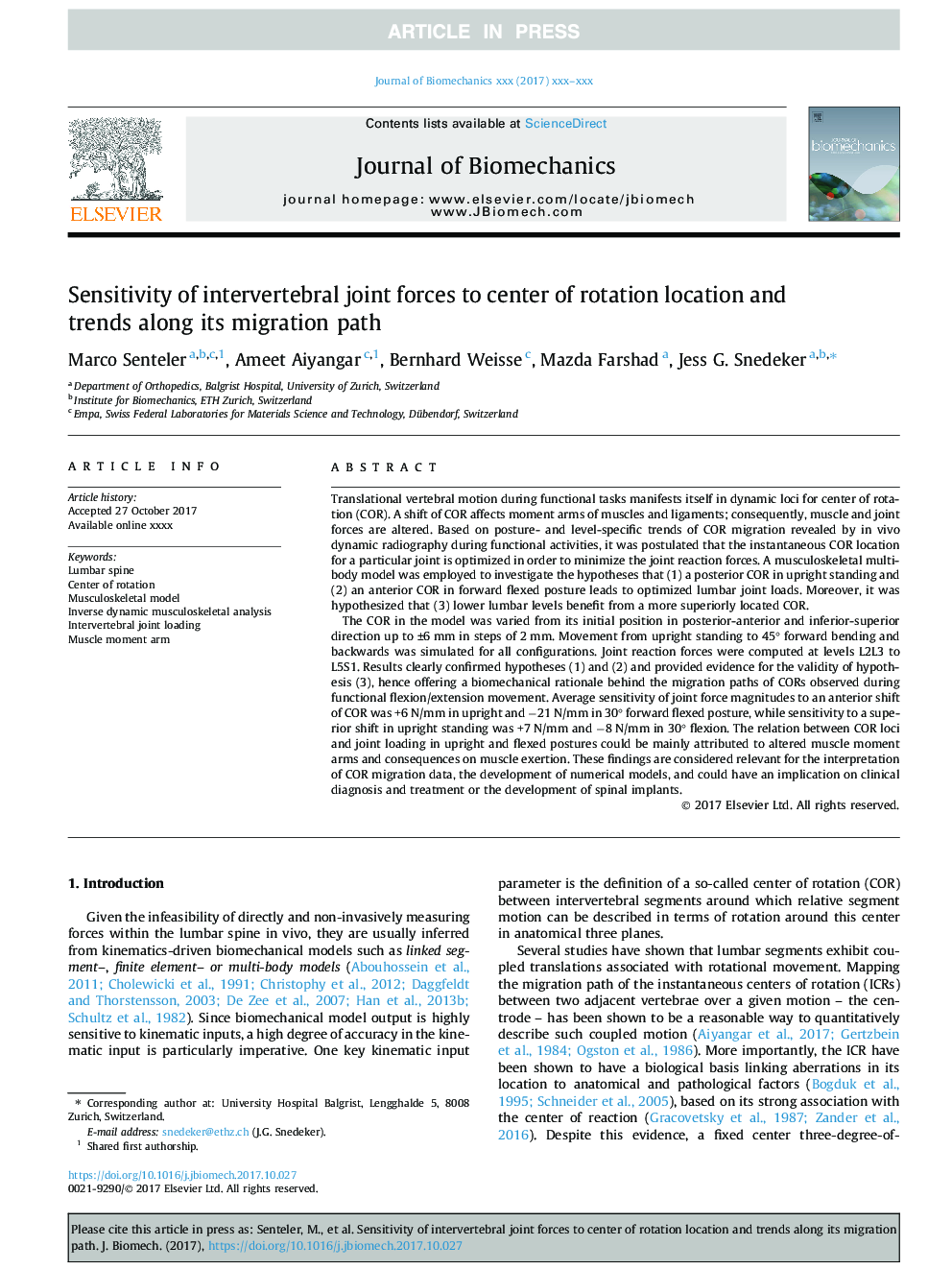| Article ID | Journal | Published Year | Pages | File Type |
|---|---|---|---|---|
| 7236493 | Journal of Biomechanics | 2018 | 9 Pages |
Abstract
The COR in the model was varied from its initial position in posterior-anterior and inferior-superior direction up to ±6â¯mm in steps of 2â¯mm. Movement from upright standing to 45° forward bending and backwards was simulated for all configurations. Joint reaction forces were computed at levels L2L3 to L5S1. Results clearly confirmed hypotheses (1) and (2) and provided evidence for the validity of hypothesis (3), hence offering a biomechanical rationale behind the migration paths of CORs observed during functional flexion/extension movement. Average sensitivity of joint force magnitudes to an anterior shift of COR was +6â¯N/mm in upright and â21â¯N/mm in 30° forward flexed posture, while sensitivity to a superior shift in upright standing was +7â¯N/mm and â8 N/mm in 30° flexion. The relation between COR loci and joint loading in upright and flexed postures could be mainly attributed to altered muscle moment arms and consequences on muscle exertion. These findings are considered relevant for the interpretation of COR migration data, the development of numerical models, and could have an implication on clinical diagnosis and treatment or the development of spinal implants.
Related Topics
Physical Sciences and Engineering
Engineering
Biomedical Engineering
Authors
Marco Senteler, Ameet Aiyangar, Bernhard Weisse, Mazda Farshad, Jess G. Snedeker,
